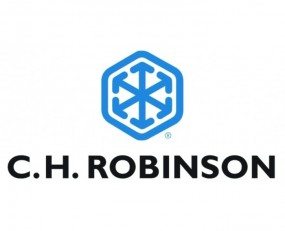
The trading update released by US-based 3PL C.H. Robinson last week left a bitter taste in the mouth of investors, with shares still trading well below pre-announcement levels.
Its core truckload revenues are under pressure and the other business units are also enjoying mixed fortunes, with intermodal – its smallest division at group level – the worst performer.
At $329m, truckload net revenues fell 1.7%, while the less-than-truckload (LTL) unit, which is the second-largest division based on net turnover, grew 9% and generated $99m of net sales.
Ocean and air freight forwarding recorded a growth rate of 1.7% and 2.7%, respectively, hitting $60m and $20m. The customs brokerage unit, meanwhile, saw a 5.8% rise in net revenues, while other logistics services grew 24% to $26.1m.
Total net revenues stood at $594m and came on the back of gross revenues of $3.3bn, down 6.9% year-on-year, but were supported by a higher net revenue margin. Operating expenses rose 1.6% to $360.5m, but operating income was unaffected by a higher cost base, and rose 2% to $233m in the second quarter.
Operating expenses as a percentage of net revenues stood at 60.7% in the second quarter against 60.8% one year earlier, while personnel expenses rose 2.4% to $270.3m from $264m in 2015. These elements show a high level of financial discipline in the way the business is managed.
“For the second quarter, our average headcount grew 5.2% compared to the second quarter of 2015. The increase in personnel expense was less than the increase in average headcount due to decreased expenses related to incentive plans that are designed to keep expenses variable with changes in net revenues and profitability,” it said.
Sales, general and administrative (SG&A) expenses decreased 0.8% to $90.2m from $90.9m, primarily due to “a decrease in the allowance for doubtful accounts, partially offset by increases in other areas including travel expenses”.
Earnings per share met expectations at $1, which compares with $0.94 one year earlier.
The group benefited from lower transportation costs – but this decline, however, is sending a mixed signal to shareholders and market observers. In fact, in the light of recent trends, transportation costs could become heavier going forward.
However, the balance sheet appears solid, with cash and cash equivalents up to $207m at 30 June 2016 from $168m at the end of 2015. Its gross debt position is stable and certainly manageable, although operating cash flow was mildly lower year-on-year at $247m in the first half of 2016 against rising cash flow from investment, which determined a lower free cash flow during the period.
Still, its projected free cash flow is a healthy 4% and supports a generous policy for dividends and buybacks. The former rose by 11.4% to 127m year-on-year in the first half of 2016, while share repurchases dropped 26.6% to $66m.
Source: Transport Intelligence, August 2, 2016
Author: Alessandro Pasetti